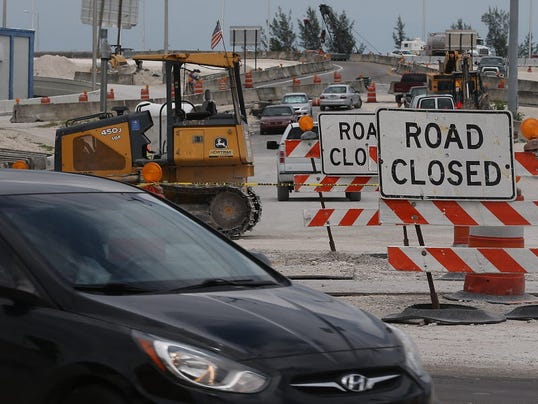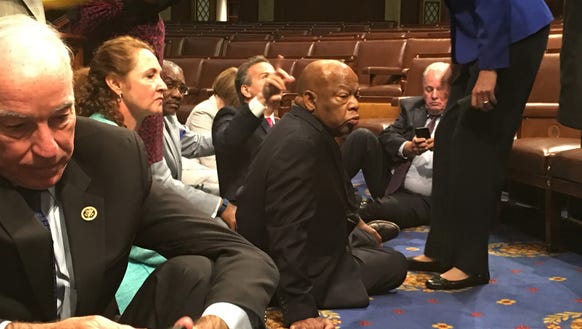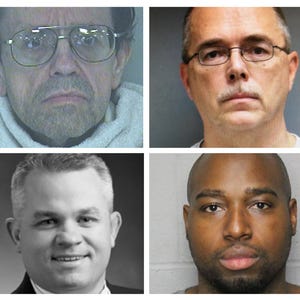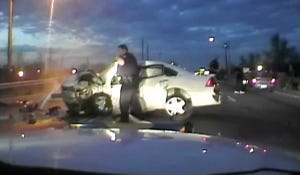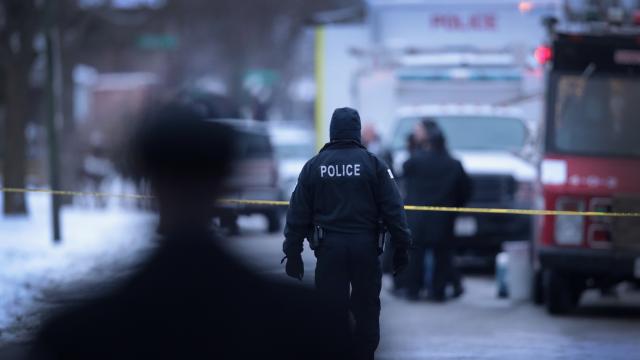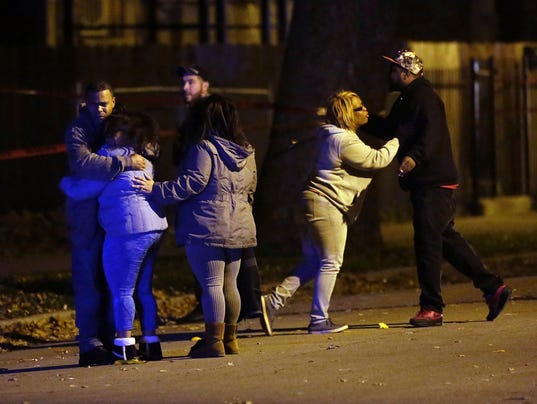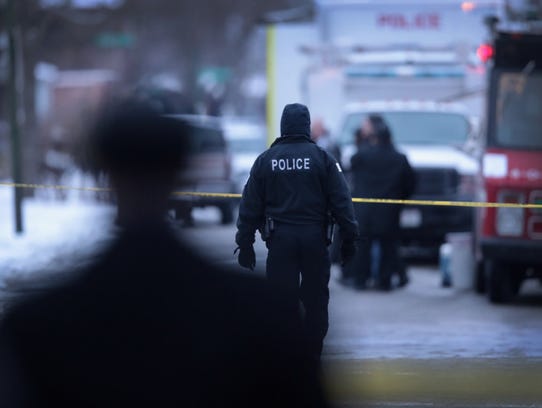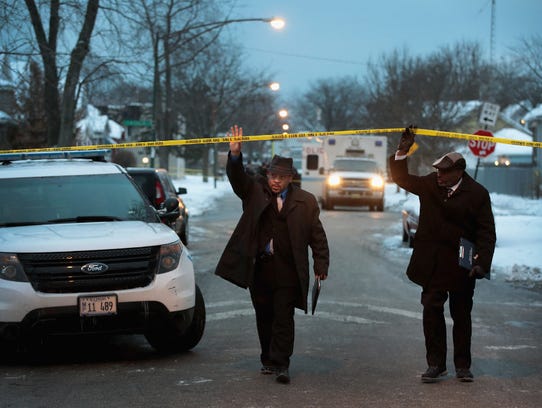Donald Trump speaks in Philadelphia on Sept. 7, 2016. (Photo: Mark Makela, Getty Images)
From coast to coast this year, USA NETWORK journalists tracked President-elect Donald Trump's thousands of lawsuits, teachers who lost their licenses in one state and moved on to teach in another, and water utilities delivering drinking water to customers contaminated with lead.
Here's a look back at just some of USA TODAY's investigative journalism in 2016.
Trump and the Law: A deep dive into President-elect Donald Trump's 4,000-plus lawsuits
Donald Trump ran for president touting his success in business. So what's his track record? A lot of the back story is shielded from public view because Trump's ventures are private companies.
But, more than 4,000 times over about four decades, Trump and his companies ended up in court. The USA TODAY Network tracked the thousands of cases in courthouses coast to coast and these are the stories we found about the ways that Trump and his companies operate.
USA TODAY
Dive into Donald Trump's thousands of lawsuits
What we found was an unprecedented number of lawsuits -- 3,500 at first and ultimately growing to more than 4,000 as the coast to coast check of courthouses continued throughout the year. Trump and his companies had found everyone from local governments to vodka makers in court.
The lawsuits revealed things about Trump's track record as a business mogul that became part of the campaign narrative. For instance, our review uncovered employees and contractors who had to take legal action to get paid by Trump and his companies. Hundreds say he doesn’t pay his bills, including painters, dishwashers and cabinet-makers.
USA TODAY
USA TODAY exclusive: Hundreds allege Donald Trump doesn’t pay his bills
At least 20 lawsuits involved allegations that Trump and his companies mistreated or discriminated against women, a story which broke at the time that the candidate was facing allegations of unwanted advances involving female colleagues and business associates.
They also uncovered more than 100 legal disputes involving Trump and his companies fighting their tax bills, or not paying taxes on time until facing legal action from local, state or federal government agencies.
And while Trump is well known for threatening to sue people who say things he doesn't like, the exclusive data collected by USA TODAY showed that Trump rarely follows through on threats to sue people in those cases. And, when he does, he almost never wins.
Around Election Day, we reported how Trump's 75 or so open lawsuits could distract from his presidency or raise conflicts of interest, something that's continued to be an issue as his inauguration nears.
USA TODAY
Trump and the Law
Broken discipline tracking systems let teachers flee troubled pasts and get back in classrooms
A year-long investigation by the USA TODAY NETWORK found fundamental defects in the teacher screening systems used to ensure the safety of children in the nation's more than 13,000 school districts.
The patchwork system of laws and regulations — combined with inconsistent execution and flawed information-sharing between states and school districts — fails to keep teachers with histories of serious misconduct out of classrooms and away from schoolchildren. The report forced several states to begin investigations, change policies or with state legislatures to change laws to strengthen how they screen and tracking teachers' backgrounds.
Over the course of a year, the USA TODAY NETWORK gathered the databases of certified teachers and disciplined teachers using the open records laws of each of the 50 states. Additionally, journalists used state open records laws to obtain a private nationwide discipline database that many states use to background teachers.
The analysis of millions of records found that states fail to report the names of thousands of disciplined teachers to a privately-run database that is the nation’s only centralized system for tracking teacher discipline. Many omissions were acknowledged by states’ education officials and the database’s non-profit operator. Without entries in the database, troubled and dangerous teachers can move to new states and get back in classrooms undetected.
The names of at least 9,000 educators disciplined by state officials are missing from the clearinghouse operated by the non-profit National Association of State Directors of Teacher Education and Certification. At least 1,400 of those teachers’ licenses had been permanently revoked, including at least 200 revocations prompted by allegations of sexual or physical abuse,
The investigation also revealed that state systems for checking the backgrounds of teachers are rife with inconsistencies, leading to dozens of cases in which state education officials found out about a person’s criminal conviction only after a teacher was hired by a district and already in the classroom. Eleven states don’t comprehensively check teachers' work and criminal backgrounds before issuing licenses, leaving that work to local districts — where critics say checks can be done poorly or skipped.
The USA TODAY NETWORK analysis found many examples of failure of screening at the school district level, including school systems first made aware of troubled teachers on their staffs by journalists. One teacher in North Carolina was removed from the classroom and another in Louisiana resigned in recent weeks after journalists questioned school districts about past disciplinary actions in other states.
USA TODAY
Broken discipline tracking systems let teachers flee troubled pasts
Beyond Flint: Excessive lead found in almost 2,000 water systems across 50 states
While a harsh national spotlight focused on the drinking water crisis in Flint, Mich., a USA TODAY NETWORK investigation identified almost 2,000 additional water systems spanning all 50 states where testing had shown excessive levels of lead contamination over the previous four years.
The water systems, which reported lead levels exceeding Environmental Protection Agency standards, collectively supply water to 6 million people. About 350 of those systems provide drinking water to schools or day cares. The USA TODAY NETWORK investigation also found at least 180 of the water systems failed to notify consumers about the high lead levels as federal rules require.

(Photo: Andrew West, USA TODAY NETWORK)
USA TODAY
Beyond Flint: Excessive lead levels found in almost 2,000 water systems across all 50 states
Many of the highest reported lead levels were found at schools and day cares. A water sample at a Maine elementary school was 42 times higher than the EPA limit of 15 parts per billion, while a Pennsylvania preschool was 14 times higher, records show. At an elementary school in Ithaca, N.Y., one sample tested this year at a stunning 5,000 ppb of lead, the EPA’s threshold for “hazardous waste.”
"This is most definitely a problem that needs emergent care," Melissa Hoffman, a parent in Ithaca, forcefully pleaded with officials at a public hearing packed with upset parents demanding answers.
USA TODAY
Lead taints drinking water in hundreds of schools, day cares across USA
In all, the analysis of EPA enforcement data identified 600 water systems in which tests at some taps showed lead levels topping 40 parts per billion (ppb), which is more than double the EPA's action level limit.
At year's end, USA TODAY wrapped up this investigation with a report showing that about 4 million Americans were getting drinking from tiny utilities — mostly in rural or remote areas — where operators were cited for not properly testing the water for lead contamination or not treating the water after detecting lead.
USA TODAY
4 million Americans could be drinking toxic water and would never know
Black people are three times more likely to be killed in high-speed police chases
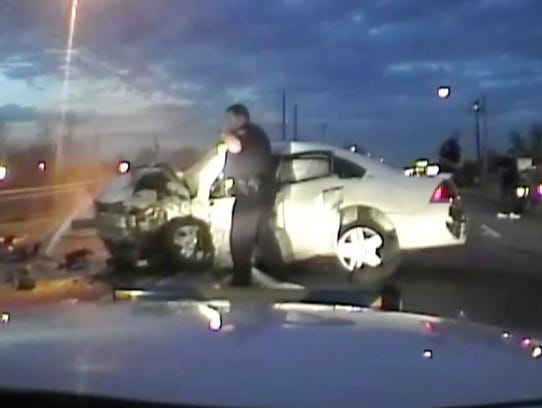
Two people were killed in 2013 after a police chase in Miami Township Ohio, outside Cincinnati. An officer who suspected the men of selling drugs chased them at 116 mph on a busy highway before they crashed head-on into another car, injuring its driver. (Photo: Miami Township Police Department)
A first-of-its-kind investigation by USA TODAY revealed a long-standing, deadly and, until now, overlooked inequality in U.S. policing. The deep dive into an exclusive trove of records gathered by USA TODAY shows that black people across the nation – both innocent bystanders and those fleeing the police – have been killed in police chases at a rate nearly three times higher than everyone else.
USA TODAY examined federal records for 5,300 fatal pursuits since 1999, when the government started tracking the races of people killed in car crashes. USA TODAY also took a deeper look at 702 chases in 2013 and 2014, reviewing thousands of pages of police documents and hours of video of pursuits across the nation.
Blacks have been killed at a disproportionate rate in pursuits every year since 1999. On average, 90 black people were killed each year in police chases, nearly double what would be expected based on their percentage of the population. Deadly pursuits of black drivers were twice as likely to start over minor offenses or non-violent crimes. In 2013 and 2014, nearly every deadly pursuit triggered by an illegally tinted window, a seat-belt violation or the smell of marijuana involved a black driver.
USA TODAY
For blacks, police pursuits far more deadly
FBI ran website sharing thousands of child porn images, allowing images to continue to be shared so they could ID users
For nearly two weeks last year, the FBI operated what it described as one of the Internet’s largest child pornography websites, allowing users to download thousands of illicit images and videos from a government site in the Washington suburbs.
The operation — whose details remained largely secret before the USA TODAY report — was at least the third time in recent years that FBI agents took control of a child pornography site but left it online in an attempt to catch users who officials said would otherwise remain hidden behind an encrypted and anonymous computer network. In each case, the FBI infected sites with software that punctured security, allowing agents to identify hundreds of users.
The Justice Department acknowledged in court filings that the FBI operated the site, known as Playpen, from Feb. 20 to March 4, 2015. At the time, the site had more than 215,000 registered users and included links to more than 23,000 sexually explicit images and videos of children, including more than 9,000 files that users could download directly from the FBI. Some of the images described in court filings involved children barely old enough for kindergarten.
That approach is a significant departure from the government’s past tactics for battling online child porn, in which agents were instructed that they should not allow images of children being sexually assaulted to become public. The Justice Department has said that children depicted in such images are harmed each time they are viewed, and once those images leave the government’s control, agents have no way to prevent them from being copied and re-copied to other parts of the internet.
USA TODAY
FBI ran website sharing thousands of child porn images
Officials acknowledged those risks, but said they had no other way to identify the people accessing the sites.
“We had a window of opportunity to get into one of the darkest places on Earth, and not a lot of other options except to not do it,” said Ron Hosko, a former senior FBI official who was involved in planning one of the agency’s first efforts to take over a child porn site. “There was no other way we could identify as many players.”
DEA regularly mines Americans' travel records to seize millions in cash, but rarely arrests
Federal drug agents regularly mine Americans’ travel information to profile people who might be ferrying money for narcotics traffickers — though they almost never use what they learn to make arrests or build criminal cases.
Instead, that targeting has helped the Drug Enforcement Administration seize a small fortune in cash.
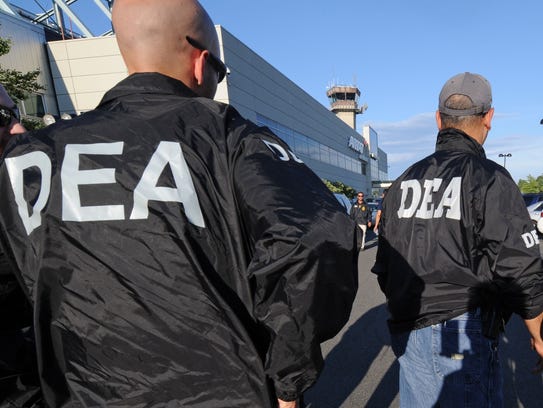
(Photo: Louis Lanzano, AP)
DEA agents have profiled passengers on Amtrak trains and nearly every major U.S. airline, drawing on reports from a network of travel-industry informants that extends from ticket counters to back offices, a USA TODAY investigation found. Agents assigned to airports and train stations singled out passengers for questioning or searches for reasons as seemingly benign as traveling one-way to California or having paid for a ticket in cash.
The DEA surveillance is separate from the vast and widely-known anti-terrorism apparatus that now surrounds air travel, which is rarely used for routine law enforcement. It has been carried out largely without the airlines’ knowledge.
It is a lucrative endeavor, and one that remains largely unknown outside the drug agency. DEA units assigned to patrol 15 of the nation’s busiest airports seized more than $209 million in cash from at least 5,200 people over the past decade after concluding the money was linked to drug trafficking, according to Justice Department records. Most of the money was passed on to local police departments that lend officers to assist the drug agency.
“They count on this as part of the budget,” said Louis Weiss, a former supervisor of the DEA group assigned to Hartsfield-Jackson Atlanta International Airport. “Basically, you’ve got to feed the monster.”
Contributing to these investigations: Brad Heath, Alison Young, Laura Ungar, Mark Nichols, Nick Penzenstadler, Steve Reilly, Thomas Frank, David McKay Wilson, Karen Yi and John Kelly, as well as dozens of journalists in local newsrooms across the USA TODAY NETWORK.
12086 CONNECT TWEET LINKEDIN 36 COMMENT EMAIL MORE
Read or Share this story: http://usat.ly/2ibrcJE




















